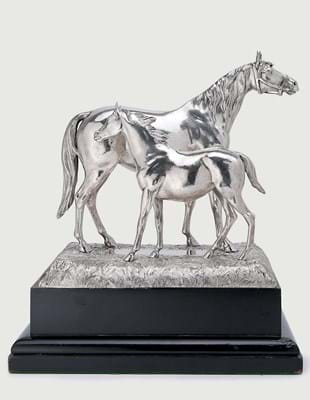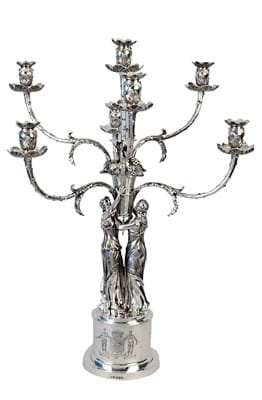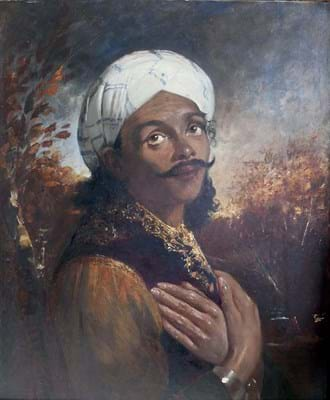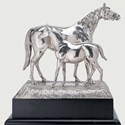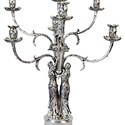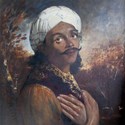The answer to that question naturally lies with the potential buyer, but at The LAPADA Art & Antiques Fair those in the market for such pieces can find the expert advice to help make the decision, along with a wide choice of items.
Marking its 10th edition in Mayfair’s Berkeley Square from September 14-19, the annual LAPADA fair offers a variety of luxury objects designed to attract first-time buyers and seasoned collectors alike.
“When purchasing anything it’s nice to be able to speak to people who understand the market,” says dealer Daniel Franks of I Franks, a London silver dealership exhibiting at the event. “The reason to go to fairs like this is that you get to talk to experts and you’re guaranteed the quality is going to be exceptional.”
If the caviar dish appeals, one is to be found on offer at the stand of Mary Cooke Antiques, another London dealership specialising in antique silver. Caviar was such a luxury at the time of the object’s creation (1809) that few such bowls were created.
This one, priced at £4850, has several unusual features, such as basket-weave decoration, and features the cipher of King George III surrounded the motto of the Order of the Garter.
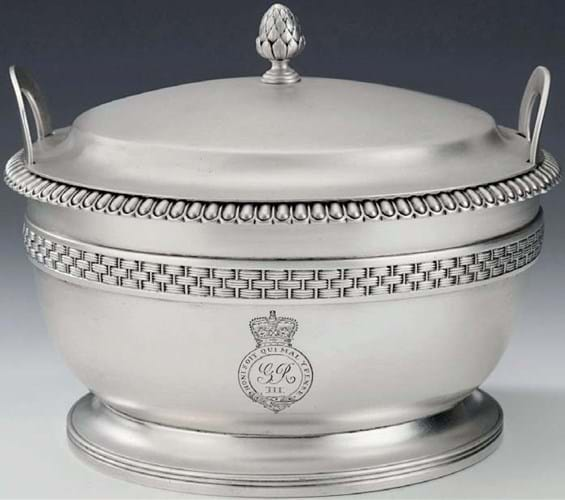
Mary Cooke Antiques offers this rare George III caviar dish and cover for £4850 at the LAPADA fair. Made in London in 1809 by Emes and Barnard, the dish stands on a circular ‘tucked in’ foot decorated with reeding. It measures 6in (15cm) across and is engraved with the cipher of King George III surrounded by a garter engraved with the motto of the Order of the Garter. The sovereign’s crown is finely engraved above.
According to the gallery’s Neil Shepperson, the piece is more collector’s item than object for daily use. However, the business comes to the fair armed with a wide range of both decorative and usable domestic silver, some of which typically goes to local buyers who use such silver to grace the interior of their Georgian homes.
“The reason to go to fairs like this is that you get to talk to experts and you’re guaranteed the quality is going to be exceptional
Double check
Visitors benefit from a system that narrows down offerings at the fair twice. Only dealers accepted as members of the LAPADA trade association may exhibit; then each exhibitor’s stand is fully vetted before the doors open, ensuring all stock meets the standard of the event.
Around 110 dealers participate, offering clocks, portrait miniatures, jewellery, textiles, contemporary art, ceramics, glass and more. Highlights include: a portrait miniature of the Pre-Raphaelite artist William Holman Hunt by Edward Robert Hughes offered by Ellison Fine Art; a matched pair of early Regency period gilt brass-mounted writing tables from Peacock’s Finest; and an embroidered Quaker map of Europe by Margaret Mennsey brought by Witney Antiques.
Even within given collecting fields, however, objects can vary widely.
For example, another stand-out silver object, completely different in form to the dish mentioned above, is a large, unique 19th century epergne (or centrepiece), this time from I Franks.
Featuring two twisting palm trees, several figures and an elephant, it was specially commissioned for Captain (later Admiral) George Tryon, who served as transport officer to Annesley Bay in the 1860s during the Abyssinian Expedition. This campaign was to free missionaries and representatives of the British government who had been imprisoned by Emperor Tewodros II of Ethiopia.
Tryon’s role included moving troops and supplies as well as other arduous endeavours such as the distillation of 30,000 tonnes of drinking water for the troops and the safe transport of 36,000 animals from ship to shore.
Ultimately, the expedition was a success and Tryon was rewarded with this monumental epergne, complete with scenes of the campaign from the Mercantile Marine Association.
Now known as the Vice Admiral Sir George Tryon centrepiece, it was hallmarked in Birmingham in 1868 by Frederick Elkington.
Beautiful material
“Silver is a beautiful metal – that’s why it’s been popular for centuries. It can fit many lifestyles and looks beautiful on the table,” Franks says. “When you have the provenance, it’s lovely to be able to think about the history of a piece – though you don’t always get stories like this.”
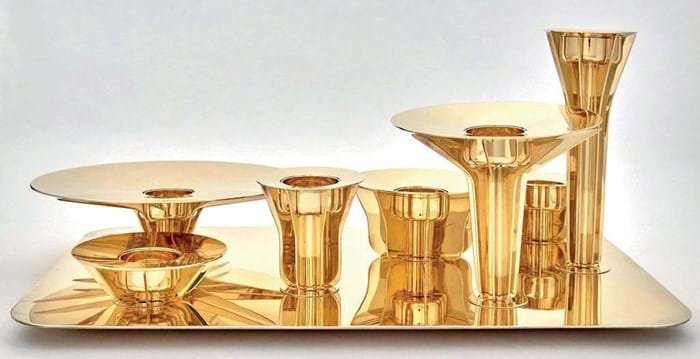
One of the more modern pieces on offer from I Franks is this ‘Surtout de Table’, designed by Barber & Osgerby – the design team behind the London 2012 Olympic relay torch – for dealership Mallett’s contemporary design collection Meta, c.2009. It is made of gold-plated Britannia-standard silver and is priced at £18,975 at the LAPADA fair.
As is the case with most collecting fields at the moment, the market is particularly solid for top-quality and unique examples of silver. That, according to Shepperson, plays in well to the nature of the September fair: “You can’t depend on selling run-of-the-mill things if you want to do well at LAPADA.”
That does not mean that all objects are pitched at the highest prices, however. Organisers are committed to offering a variety of objects in terms of value (prices range roughly from £500-500,000) as well as type, date and style.
“It’s an incredibly welcoming and inclusive environment for those visiting,” says Freya Simms, who became CEO of LAPADA in June.
She has carried on the organisational efforts of outgoing fair director Mieka Sywak with new fair manager Sophie Wood, and has previous experience of this event as a visitor. “It is a really rich hunting ground in terms of age, variety and value there,” she adds. “There is something for everyone”.


